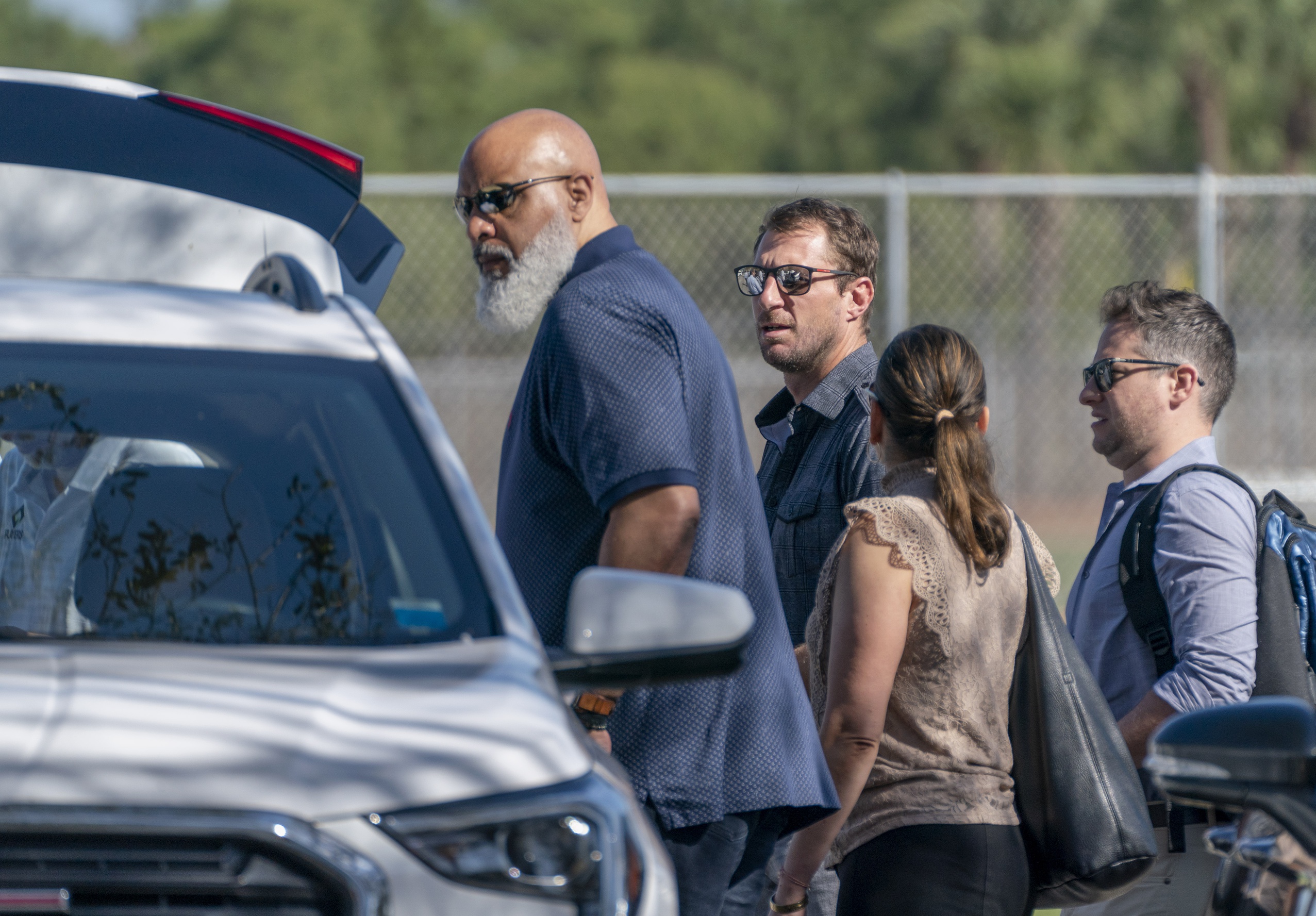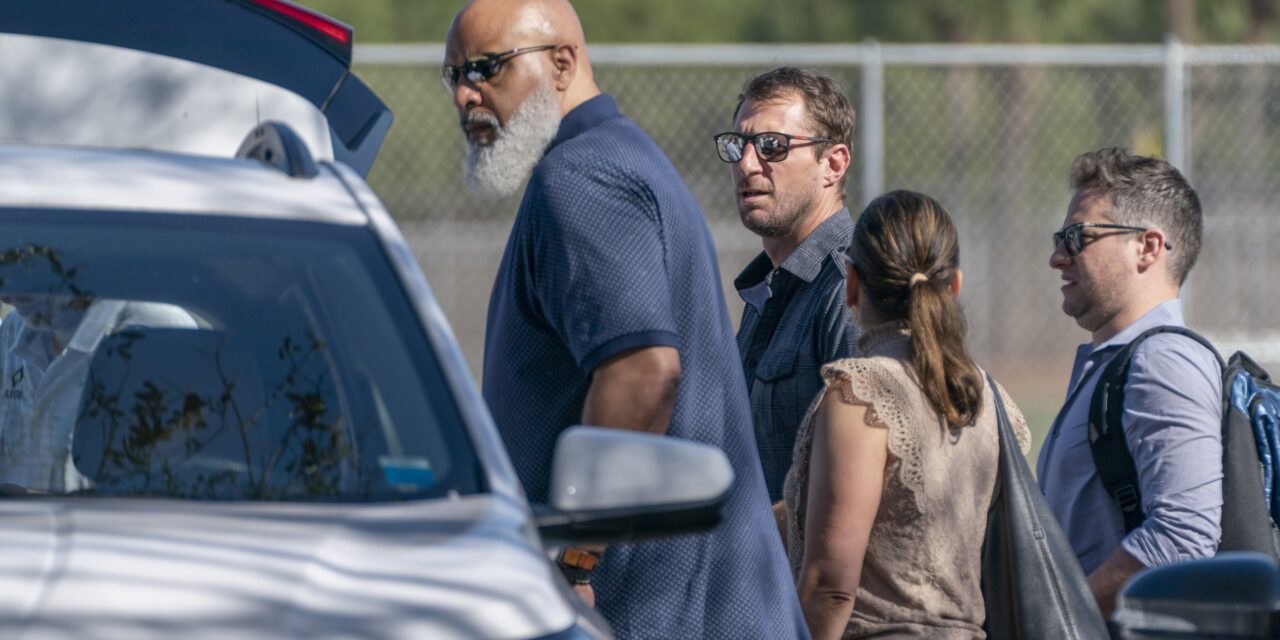
Greg Lovett-USA TODAY NETWORK
We have one “post game cancellation” day in the books, and there are no negotiating sessions planned between Major League Baseball and The Major League Baseball Players’ Association. This is a new phase of the lockout, where every week that goes by, another week of the regular season games will likely be sacrificed.
At this point, it’s all about leverage, and who will feel a need to make the first big move to re-start the bargaining sessions. Who has leverage in the short term, who has it in the longer term, and what are the lengths of these “terms”?
Let’s start with the players. They will begin missing paychecks as of April 15. We know that approximately two-thirds of players make less than $1 million per year, so there may be some level of dissent in the union ranks fairly soon when missed paydays start to become a reality. We have heard of a war chest to help supplement missing paychecks. How that works is unknown. So we may be able to say that in the very short term, the owners may have the leverage ,if the rank-and- file of the union starts to put pressure on union leadership to make a deal.
Now, let’s move to the owners. At some point, they will lose revenue streams. The question is, when is that time. In an article on ESPN.com, Jeff Passan offers the following:
If somehow that’s not enough (losing postseason revenue), consider the other, more-prominent leverage point left for the players: rebates paid out to the regional sports networks that carry local broadcasts for games not played. Depending on the team, avoiding rebates necessitates between 138 and 150 games broadcast. It provides the basis for a widely shared view among players: that because of the rebate threshold and low April attendance, teams are perfectly fine missing the first month of the season.
That’s a peek behind the curtain of how income from regional sports networks functions. Using the 138 number, basically, “miss 25 games, and you’ll be paying us back.” How many games are played in March/April? The Mets had 27 games scheduled in 2022. If SNY would get a rebate at the 138 games played level, the Mets need to get on the field shortly before the end of the month. This gives more credence to the idea that the first month of the season may be seen as a “throw away” by the owners. Just start playing before it costs us money. We can use the first month to try to squeeze as much as we can from the union.
Who has longer-term leverage? We know that postseason revenue is a big part of operating revenue for the clubs. That revenue stands to grow if the playoff field expands to either 12 or 14 teams. If the season becomes too watered-down by the cancellation of games, fan interest will wane even further. Those postseason contracts will become less valuable, and losses here will be felt significantly by the owners.
Finally, there’s long-term franchise valuation. Once again, while there are many revenue streams, they’re all tied to fan interest, including and especially television contracts. A long work stoppage will further damage the game’s status among its paying customers, which will impact all of these revenue streams. It’s fair to say the players have a leverage point in the longer term, though they have the reality that their careers are finite, and they need to capitalize on financial opportunities while they have the chance to do so.

Greg Lovett-USA TODAY NETWORK
How far are the players and owners from a deal? Once again, let’s look at the three core economic issues.
Revenue Sharing
There has not been much talk about this lately. Whether or not it re-surfaces in the next round of talks remains to be seen. For now, it’s status quo with 48% of local revenue being shared. A salary floor can only help one the players tenets, increased competition. The minimum salary requirement can also help assure that revenue generated by the players is, to a much higher degree, spent on players’ salaries rather than pocketed by recipient clubs.
Pre-Arbitration Compensation
MLB and the MLBPA are not all that far off here. In part one, minimum salary, they are $40,000 apart in year one of a new Collective Bargaining Agreement, as well as $10,000 apart each year on the escalation amount. There has to be a way to bridge this gap. Regarding part two, the bonus pool, they have some work to do. There was some question here on a previous post regarding whether or not players with less than three years of service time are eligible for arbitration (which will be replaced by the bonus pool for such players). Some players with fewer than three years of service time (“Super Two” players) are eligible for arbitration now, and would be candidates for the bonus pool in a new CBA. From MiLB.com:
Super Two’ Players. In addition, a Player with at least two but less than three years of Major League service shall be eligible for salary arbitration if: (a) he has accumulated at least 86 days of service during the immediately preceding season; and (b) he ranks in the top 22% (rounded to the nearest whole number) in total service in the class of Players who have at least two but less than three years of Major League service, however accumulated, but with at least 86 days of service accumulated during the immediately preceding season. If two or more Players are tied at 22%, all such Players shall be eligible.
The players initially wanted all players with more than two but less than three years of service time eligible for the bonus pool. They relented, and are willing to keep the percentage at 22%, where it is now. The gap in how much goes into the pool stands at $55 million, seemingly resolvable (somewhere in the middle) with $85 million more set to come in during a 12-team playoff format.
Competitive Balance Tax
Let’s keep it simple. There will be more revenue in the game with an expanded postseason. There may be expansion, which will be a big stream of income. The players want the clubs to be able to spend more on the top end. The owners say “not so fast.” Passan offers an interesting solution in his article. Keep the CBT threshold increases modest in the early years of a new CBA, and expand them in the later years, when the game’s income will be much greater.
The league indicated a desire to chart this course with its five-year proposal of $220 million, $220 million, $220 million, $224 million and $230 million. Something closer to the league’s desire over the first two years (say, $222 million and $227 million) and more in line with the union’s ask for the final three ($237 million, $247 million and $257 million) gives the league the short-term revenue fix it desires while expanding the CBT in later years to be more commensurate with revenue growth.
Makes perfect sense to me. Even if there isn’t expansion in the next five years, the teams will have seen $85 million addition for two years with very small increases in the CBT threshold, then a year of a modest increase, then more significant increases.
MLB and the MLBPA are close on the draft lottery (five versus seven teams), have agreed to methods to mitigate service time manipulation, and have agreed on the Universal Designated Hitter.
To get to a deal, they have to solve the bonus pool and the CBT, with the latter being the biggest obstacle. Passan has offered a logical solution. The players and owners need to get back to the table soon, because we can surmise that the “deadline” to get the season started may realistically be the middle of April.
We know neither side wants to lose money. At least they can agree on that.
















